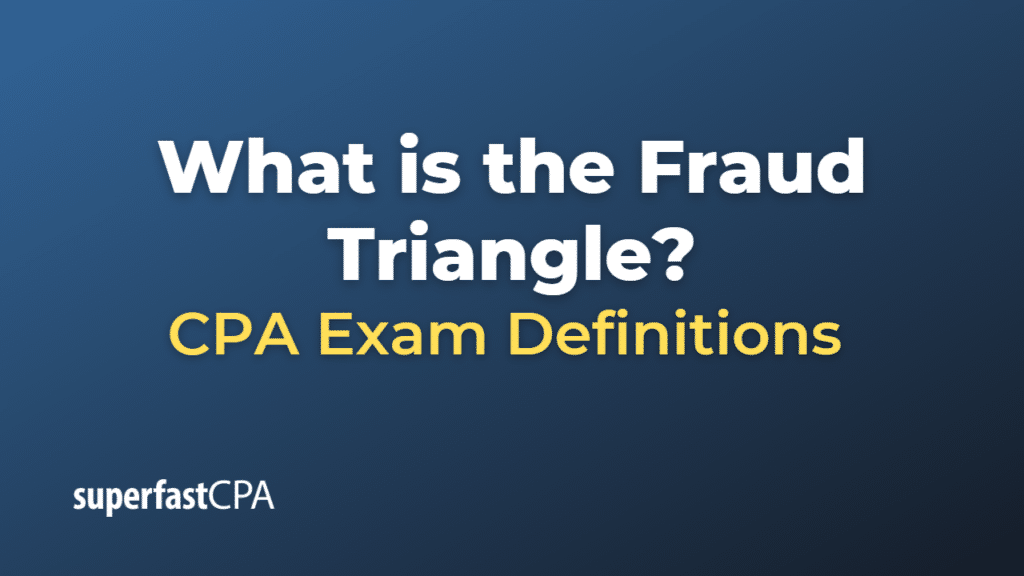Fraud Triangle
The Fraud Triangle is a model developed by criminologist Donald Cressey to explain why individuals commit fraud. The model suggests that three factors — pressure, opportunity, and rationalization — must be present for an individual to commit fraud:
- Pressure (or Incentive): This is the motivation or the need for committing fraud. The pressure can be financial, such as high personal debts, gambling addiction, or a desire to lead a more luxurious lifestyle. It could also be non-financial, like high performance expectations, job insecurity, or personal issues.
- Opportunity: This refers to the circumstances that allow fraud to take place. An opportunity arises when an individual has access to assets and information that allows them to both commit and conceal the fraud. This usually occurs in the absence of strong internal controls, lack of oversight, or the ability to override existing controls.
- Rationalization: This is the process by which the fraudulent individual reconciles their dishonest actions with their own perception of themselves as decent and trustworthy. They might convince themselves that they’re only “borrowing” the assets, that they’re underpaid and deserve more, or that the company won’t miss what has been taken.
The Fraud Triangle is widely accepted and is used by auditors and investigators to understand and prevent fraud. It’s important to note that while the presence of these factors increases the risk of fraud, they do not guarantee that fraud will occur. Also, mitigating these factors can significantly reduce the risk of fraud.
Example of the Fraud Triangle
Scenario: John is a manager in the finance department of a large corporation. He’s been struggling with financial difficulties due to his spouse losing their job and unexpected medical bills for his child. He’s also been passed over for promotions and pay raises twice in a row.
- Pressure: John feels immense pressure due to his financial difficulties. He is facing high medical bills and is struggling to maintain his family’s standard of living on his single income. This financial stress acts as a motivation for him to consider fraudulent actions.
- Opportunity: As a manager in the finance department, John has access to the company’s bank accounts and has the ability to authorize transactions. He’s aware that his company does not regularly audit their accounts payable process. This lack of controls provides him an opportunity to commit fraud without immediate detection.
- Rationalization: John convinces himself that the company owes him for the promotions and raises he was passed over for. He tells himself that he’ll replace the funds when his financial situation improves or when his spouse finds a new job. He rationalizes that what he’s doing is not entirely wrong given his circumstances and his perceived treatment by the company.
Acting on these factors, John creates a fictitious supplier and authorizes regular payments to this entity, diverting the funds to a personal bank account. He has committed fraud, with all three elements of the Fraud Triangle present.
Preventing such a situation would involve addressing the components of the Fraud Triangle: alleviating employee pressures (possibly through employee assistance programs), minimizing opportunities (through strong internal controls and regular audits), and creating an organizational culture that discourages rationalization of unethical behavior.













